What Causes Poop to Float: Is Your Poop Supposed to Float or Sink?
What causes poop to float. Is your poop supposed to float or sink? Here are 5 common reasons why poop can float and when to see a doctor about floating poop.
Floating Poop: A Sign of Digestive Health
The shape, size, and color of your poop can reveal a lot about your overall health. But what about its buoyancy? You’re likely used to your stool sinking to the bottom of the toilet bowl. So, when it starts floating like a foul-smelling log, it’s natural to wonder what’s going on.
5 Reasons Why Poop Floats
An occasional floating stool usually isn’t a serious problem. However, if all of your bowel movements are floaters, it could be a symptom of a digestive health issue. Let’s examine the common causes of floating poop and whether they warrant concern.
1. A High-Fiber Diet
Eating enough dietary fiber is essential for your health and wellness. But one weird side effect of a high-fiber diet is floating poop. That’s because your body doesn’t fully digest fiber, therefore making your poop lighter and less dense. Foods rich in fiber include whole grains, fruits, green leafy vegetables, beans, and legumes. Takeaway: You’re in the clear—stick to your fiber-rich diet.

2. Excessive Gas
The gas in your gut makes poop less dense, which allows it to float. It’s kind of like inflating a balloon, except replace helium with flatulence and swap the balloon for feces. Farting up a storm can happen when you eat high-fiber foods, overeat, make sudden changes to your diet, or swallow air while you eat. Certain foods like fizzy or carbonated drinks, gum, hard candy, and artificial sweeteners can also produce excess gas. Takeaway: No need to worry, but keeping an eye on your diet might make your poop more dense.
3. Malabsorption
This is the medical term for when your gut doesn’t absorb enough nutrients from food. Some common causes of malabsorption include lactose intolerance, steatorrhea (high-fat poop), and liver/biliary problems. If your poop floats frequently, malabsorption might be the culprit. Talking to a healthcare professional can help you confirm and treat the underlying issue. Takeaway: If your floating poop coincides with other tummy troubles, malabsorption may be the cause.

4. Gastrointestinal Disorders
More than one out of every four people with functional bowel disorders experience floating stools, according to a 2015 study. That includes medical conditions like irritable bowel syndrome (IBS) and dyspepsia (indigestion). Moreover, another 3% of people in that study with gastrointestinal disorders had floating stools. These include celiac disease, Crohn’s disease, gallstones, and other disorders that affect the digestive system. Takeaway: If your floating poop coincides with other tummy troubles, one of the above conditions may be at play. But it will take a gastroenterologist to confirm.
5. Pancreas Problems
Your pancreas regulates your blood sugar levels and produces digestive enzymes. Health problems that involve the pancreas are linked to malabsorption, which can cause poop to float. One condition called exocrine pancreatic insufficiency (EPI) (due to cystic fibrosis or chronic pancreatitis) has been linked to fatty, floating poop. A more serious issue is pancreatic cancer, where a tumor can block the pancreatic duct and lead to undigested food passing through the digestive tract. Takeaway: Consistent floating poop may indicate pancreas problems, but you can’t diagnose them based solely on what your poop looks like.

When to See a Doctor About Floating Poop
Floating poop is usually the result of something you ate; it’ll sink again once you recalibrate your diet. However, if you notice any of the following symptoms, talk to your doctor:
- Your stool floats more than a few days in a row: this might signal an underlying health condition.
- Blood in your poop: some causes of bloody poop include inflammatory bowel diseases, hemorrhoids, and colon cancer.
- Unexplained weight loss, abdominal pain, or other concerning symptoms: these can be signs of a more serious issue.
So, don’t panic if you occasionally see a floater in the toilet. But if it becomes a persistent problem or you have other worrying symptoms, it’s best to consult a healthcare professional to get to the bottom of it.
Takeaway
The buoyancy of your poop can provide clues about your digestive health. While an occasional floating stool is usually nothing to worry about, consistent floaters may signal an underlying condition like malabsorption, gastrointestinal disorders, or pancreas problems. Pay attention to your bowel movements and talk to your doctor if you have any persistent or concerning digestive symptoms.
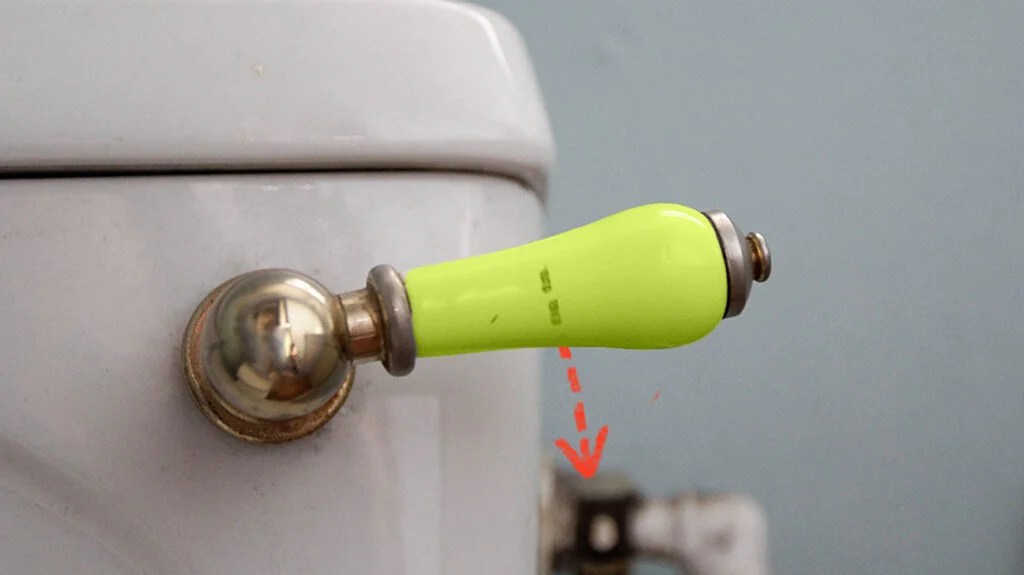
Got Floating Poop? Here Are 5 Reasons Why It Happens – DUDE Products
THIS WEBSITE USES COOKIES TO ENSURE YOU GET THE BEST EXPERIENCE. Learn more
share it!
Link copied to clipboard!
El Duderino
The shape, size, and color of your poop says a lot about your health. But what about it’s buoyancy?
You’re probably used to your poo sinking to the bottom of your toilet bowl. But now it’s floating like a foul-smelling log. What gives?
An occasional floating stool usually isn’t a serious problem. But if all of your bowel movements are floaters, it could be a symptom of a digestive health issue.
5 Reasons Why Poop Floats
Let’s examine the common causes of floating poop and whether they warrant concern.
1. A High-Fiber Diet
Eating enough dietary fiber is essential for your health and wellness. But one weird side effect of a high-fiber diet is floating poop. That’s because your body doesn’t fully digest fiber, therefore making your poop lighter and less dense.
Types of foods rich in fiber include:
- Whole grains
- Fruits
- Green leafy vegetables
- Beans
- Legumes
Takeaway: You’re in the clear—stick to your fiber-rich diet.
2. Excessive Gas
The gas in your gut makes poop less dense, which allows it to float. It’s kind of like inflating a balloon, except replace helium with flatulence and swap the balloon for feces.
Farting up a storm can happen when you eat high-fiber foods, overeat, make sudden changes to your diet, or swallow air while you eat. There are also certain foods that are notorious for producing excess gas, such as:
There are also certain foods that are notorious for producing excess gas, such as:
- Fizzy or carbonated drinks
- Gum
- Hard candy
- Artificial sweeteners like sorbitol
Takeaway: No need to worry, but keeping an eye on your diet might make your poop more dense.
3. Malabsorption
This is the medical term for when your gut doesn’t absorb enough nutrients from food. Some common causes of malabsorption include:
- Lactose intolerance: This means your body has trouble digesting lactose, a type of sugar found in dairy products. If you experience diarrhea, gas, or bloating when you eat dairy, it may be a sign of lactose intolerance.
- Steatorrhea: This means your poop has a high fat content. Steatorrhea may be a symptom of celiac disease or a bile acid deficiency
- Liver diseases and biliary problems: Your liver makes bile, which is essential for digesting food.
 But if your liver doesn’t send enough of this fluid through your bile ducts into the small intestine, it can cause fatty stool that floats. Gallstones can also block bile ducts, leading to fatty stools.
But if your liver doesn’t send enough of this fluid through your bile ducts into the small intestine, it can cause fatty stool that floats. Gallstones can also block bile ducts, leading to fatty stools.
Takeaway: If your poop floats frequently, malabsorption might be the culprit. Talking to a health care professional can help you confirm and treat the underlying issue.
4. Gastrointestinal Disorders
More than one out of every four people with functional bowel disorders experience floating stools, according to a 2015 study. That includes medical conditions like irritable bowel syndrome (IBS) and dyspepsia (indigestion).
Moreover, another 3% of people in that study with gastrointestinal disorders had floating stools. These include celiac disease, Crohn’s disease, gallstones, and other disorders that affect the digestive system.
Takeaway: If your floating poop coincides with other tummy troubles, one of the above conditions may be at play. But it will take a gastroenterologist to confirm.
But it will take a gastroenterologist to confirm.
5. Pancreas Problems
Quick anatomy lesson: your pancreas is a long, flat gland behind your stomach that regulates your blood sugar levels. Health problems that involve the pancreas are linked to malabsorption, which can cause poop to float.
One condition called exocrine pancreatic insufficiency (EPI) (due to cystic fibrosis or chronic pancreatitis) has been linked to fatty, floating poop.
A more serious issue is pancreatic cancer. If a tumor blocks the pancreatic duct, a shortage of digestive enzymes can lead to undigested food passing through the gastrointestinal tract. “If this happens, stool may float due to the higher fat content, appear bulky, greasy, and unusually pale,” explains the Columbia University Department of Surgery.
Takeaway: Consistent floating poop may indicate pancreas problems, but you can’t diagnose them based solely on what your poop looks like.
When to See a Doctor About Floating Poop
Floating poop is usually the result of something you ate; it’ll sink again once you recalibrate your diet.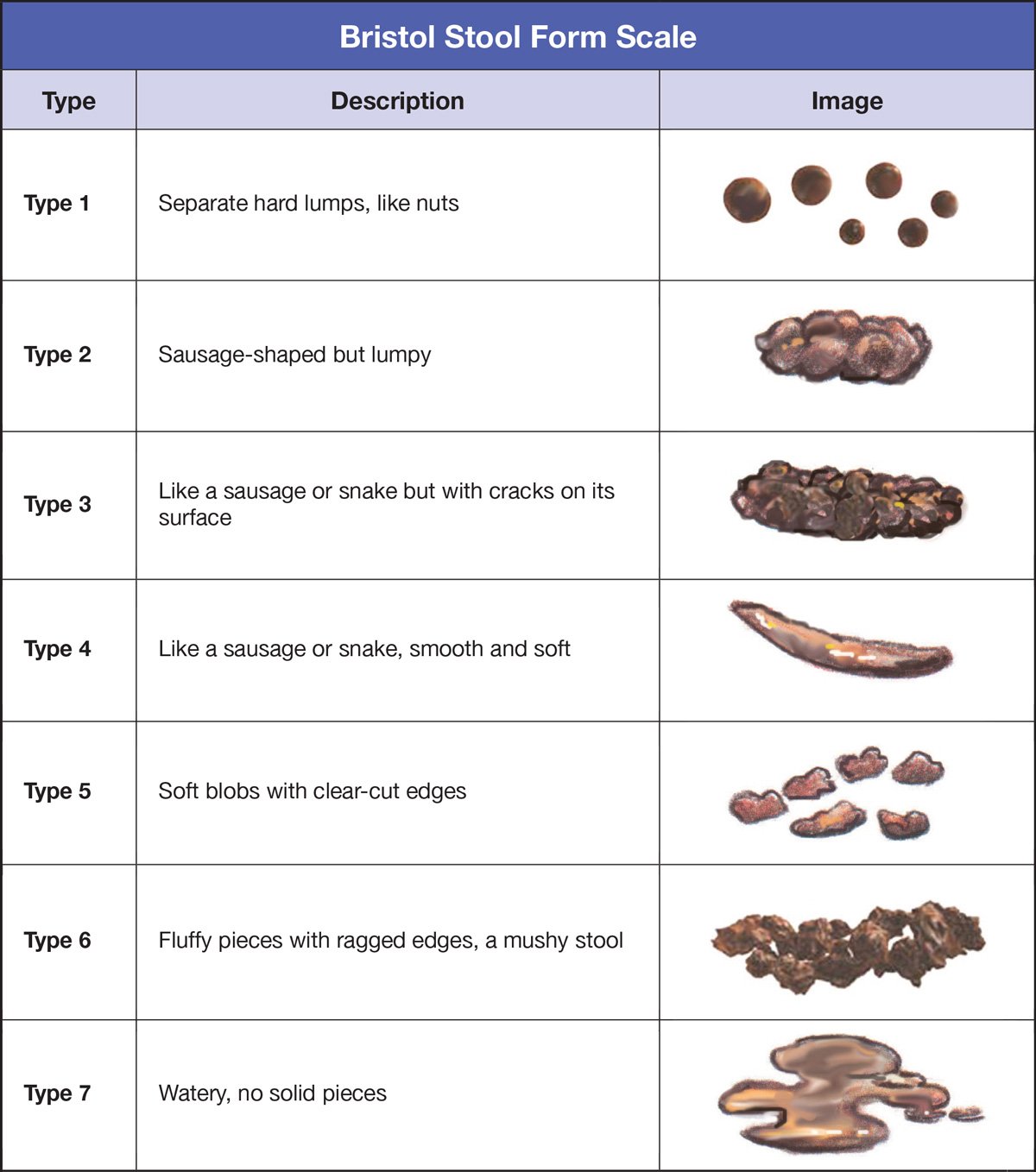 However, if you notice any of the following symptoms, talk to your doctor:
However, if you notice any of the following symptoms, talk to your doctor:
- Your stool floats more than a few days in a row: this might signal an underlying health condition.
- Blood in your poop: some causes of bloody poop include inflammatory bowel disease (IBD), ulcerative colitis, hemorrhoids, and colon cancer.
- Unintentional weight loss: chronic malabsorption prevents your body from getting the nutrients it needs to sustain a healthy weight.
Whether your poop floats, smells worse than usual, explodes out of your butt like lava, it can tell you a lot about the inner workings of your body. Pay attention, dude—your poop is smarter than you think.
Click to read more posts in this category
- poop
DUDE BlogDUDE BlogDUDE BlogDUDE BlogDUDE BlogDUDE BlogDUDE BlogDUDE BlogDUDE BlogDUDE BlogDUDE BlogDUDE Blog
El Duderino
@DUDEwipes
Butt-Chugging Is the Worst Way to Get Drunk (Trust Us)
El Duderino
@DUDEwipes
Is COVID Diarrhea a Thing?
El Duderino
El Duderino
DUDE Wipes Pass INDA’s Latest Flushability Tests
El Duderino
@DUDEwipes
What’s a Toxic Megacolon? (It’s as Serious as It Sounds)
El Duderino
@DUDEwipes
Grower vs.
 Shower Formula: Grab Your Tape Measure (and Your Penis)
Shower Formula: Grab Your Tape Measure (and Your Penis)
El Duderino
@DUDEwipes
Dutch Oven: The Deadliest Form a Fart Can Take
El Duderino
@DUDEwipes
Manspreading Is Comfortable, But It’s Also a Crime (Sort Of)
Why Does Poop Float? | The Healthy @Reader’s Digest
Floating poop is often no big deal, perhaps caused by something you ate. But in some cases it can point to serious medical issues.
What is ‘normal’ poop?
When it comes to our bowel movements, no one wants to be abnormal: after all, if you’re “regular,” that’s a good thing. If you’ve ever wondered what normal stools should look like, there is actually a chart for that. The Bristol Stool Chart, first developed in Bristol, England, in 1997, rates stools on a scale of one to seven. Type one sits in your bowels for a long time and passes hard and lumpy. Not good. Type seven moves through quickly and comes out as liquid. Also, not good. Optimal stools are type three and four, says Angela Pham, MD, a board-certified gastroenterologist with University of Florida Health. Normal stools look “sausage or snake-like” according to the chart, and can occur daily. But even if your stool appears mostly normal, it’s often a good idea to discuss any concerns or curiosities—possibly including floating poop—with your doctor. So why does poop float?
Not good. Type seven moves through quickly and comes out as liquid. Also, not good. Optimal stools are type three and four, says Angela Pham, MD, a board-certified gastroenterologist with University of Florida Health. Normal stools look “sausage or snake-like” according to the chart, and can occur daily. But even if your stool appears mostly normal, it’s often a good idea to discuss any concerns or curiosities—possibly including floating poop—with your doctor. So why does poop float?
Here is a closer look at this phenomenon, with expert insight on why poop floats, when to be concerned about it, and when to simply flush and forget.
Get The Healthy @Reader’s Digest newsletter
Why does poop float?
Frequent floating stool is often a sign of a malabsorption, according to Dr. Pham, an assistant professor in the UF Department of Medicine’s Division of Gastroenterology, Hepatology, and Nutrition. If that’s the case, it essentially means your small intestine can’t absorb nutrients or fat from food.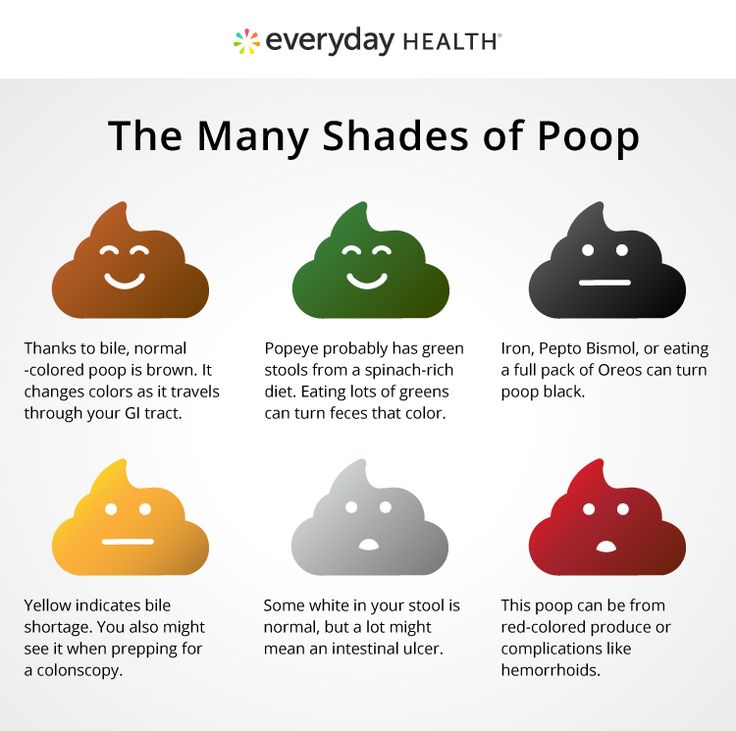
“When the body is unable to process and absorb fat, it appears in the stool, causing it to float,” she explains. “If malabsorption is occurring, a comprehensive evaluation should be done to search for the cause.”
People suffering from malabsorption can have floating, pale, greasy stools. They may see, or smell, oil droplets in the toilet or in their stool. This is a sign your body is not absorbing fat. Causes include lactose intolerance, genetics, and certain medications.
Serious digestive issues, including celiac disease, Crohn’s disease and even cystic fibrosis, can also lead to malabsorption, Dr. Pham notes.
Why a Low Residue Diet Could Help With Crohn’s, Colitis, and Other GI Problems
Calvin Chan Wai Meng/Getty Images
Irritable Bowel Syndrome might play a part
Irritable bowel syndrome (IBS) is associated with many intestinal issues, including frequent abdominal pain from diarrhea, constipation or both.
Symptoms of IBS and malabsorption can be similar, according to the International Foundation for Functional Gastrointestinal Disorders (IFFGD).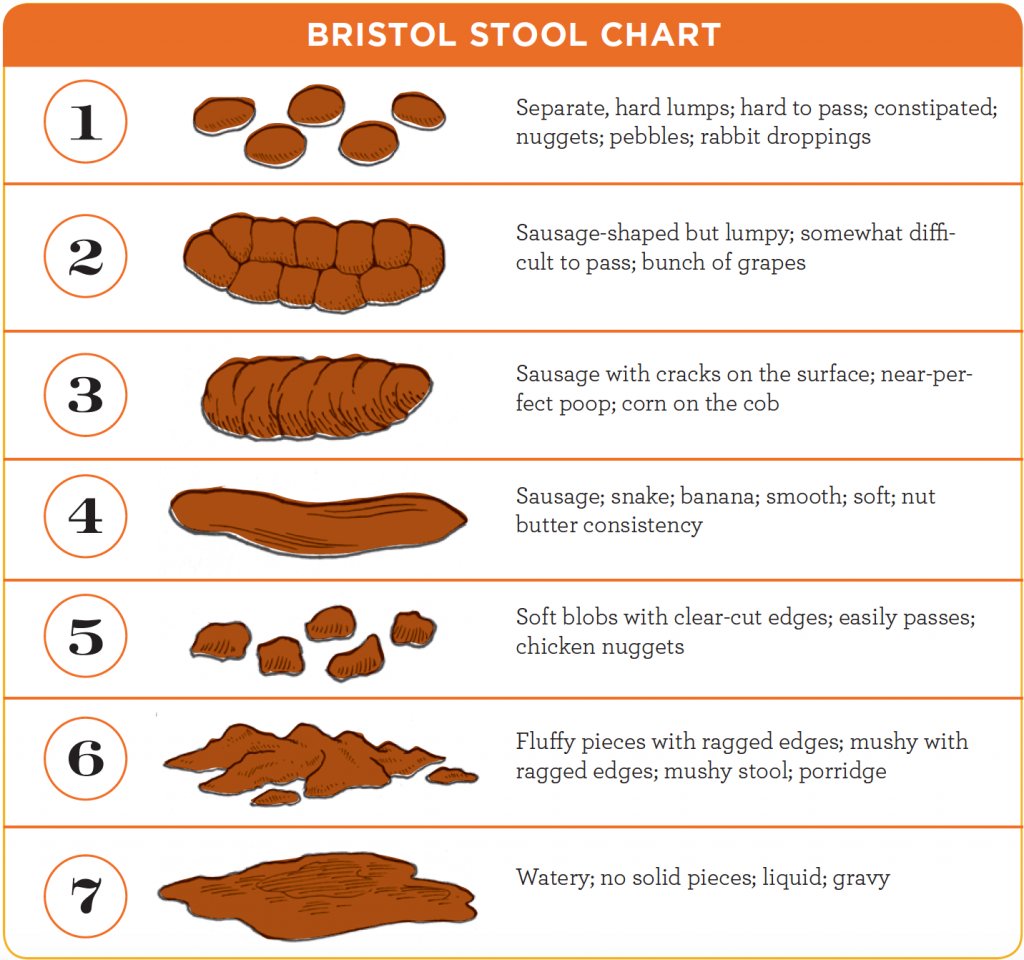 Malabsorption may aggravate existing IBS disorders.
Malabsorption may aggravate existing IBS disorders.
According to IFFGD, irritable bowel syndrome affects between 25 million and 45 million people in the United States. The exact cause of IBS is unknown, but it seems related to how the gut, brain and nervous system interact.
Floating stools are a common characteristic of IBS, according to research published in the European Journal of Gastroenterology & Hepatology. About one in four people with IBS reported frequent floating stools, the researchers found, while fewer than 3% in a control group without IBS reported the same frequency.
Guess What: Your Irritable Bowel Syndrome May Actually Be Caused By Food Sensitivities
When to seek medical advice
The occasional floater in your toilet bowl does not necessarily signal trouble. You likely need to adjust your diet, not seek medical attention.
“When you eat a high-fat diet, it creates gas (flatulence) in your intestines, which is absorbed into your stool and may cause it to float,” Dr. Pham says. Diets high in sugar, fiber, starch, and lactose can create the same issues.
Pham says. Diets high in sugar, fiber, starch, and lactose can create the same issues.
But when floating stools become more frequent, it may be time to call your doctor.
“Chronic malabsorption can lead to severe malnutrition and serious complications,” Dr. Pham says. “There are some conditions that may require lifelong medical treatment and cannot be treated with home remedies.”
Ignoring the symptoms could be life-threatening.
“If the malabsorption is due to a condition such as inflammatory bowel disease, the complications could be as severe as bowel blockage or perforation,” Dr. Pham says.
A Gastroenterologist’s Surprising Best Way to Relieve Constipation
Treatment protocols
The best treatments for malabsorption tend to be avoiding triggers (dietary) and treating symptoms (diarrhea, constipation), according to an overview of malabsorption symptoms from the National Center for Biotechnology Information (NCBI).
If the issues are linked to celiac disease, Dr.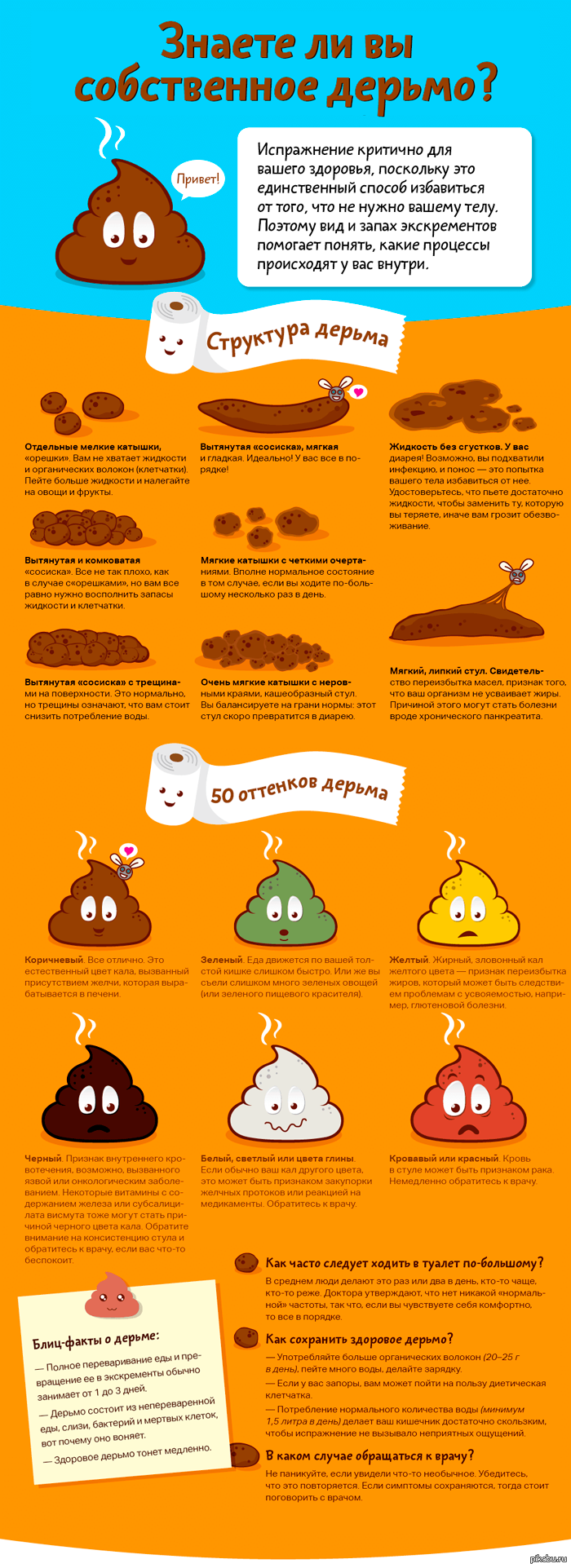 Pham says eliminating all wheat products from the diet can help reverse damage to the intestines. Medications can help manage Crohn’s disease or colitis.
Pham says eliminating all wheat products from the diet can help reverse damage to the intestines. Medications can help manage Crohn’s disease or colitis.
Boost your bacteria
Try to nurture a healthy community of bacteria in your intestines, where they serve as part of your gut microbiome. This community thrives or dies based on the foods we eat, Dr. Pham says.
Eating foods rich in prebiotics helps boost the growth of healthy microbes in your intestines.
A 2020 study conducted by the U.S. National Institute of Diabetes and Digestive and Kidney Diseases (NIDDK) concluded a healthy gut microbiome led to better nutrition absorption. In the long term, it helped boost the immune system to fight off colon cancer and other diseases.
“A short list of [optimal choices] includes leafy greens, artichokes, bananas, onions, and garlic,” Dr. Pham says. “In general, prebiotics are present in colorful, fiber-rich foods.”
And as a bonus, eating this kind of diet tends to benefit not just your digestive system, but the rest of your body, too.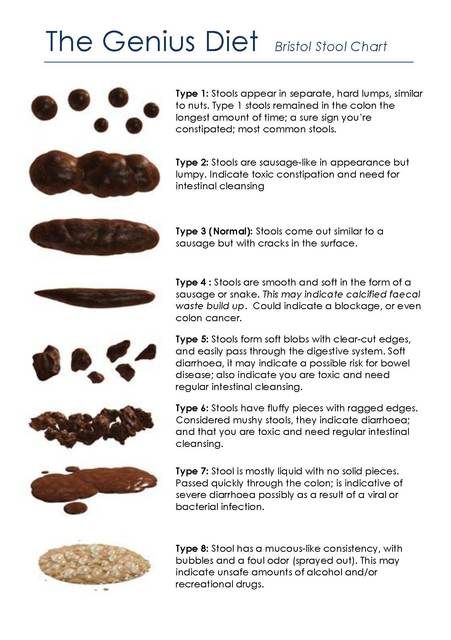
For more wellness updates, follow The Healthy on Facebook, Instagram, and Twitter. Keep reading:
- Here’s How Many Times You Should Actually Pee in a Day, a Urologist Reveals
- Jason Alexander Wants You to Get Your Flu Shot
- This Is the Only Stall You Should Use in a Public Bathroom
- 7 Signs You Have a Healthy Diet, Says a Dietitian
Popular Videos
Opportunities for early detection of colorectal cancer » Medvestnik
The highest incidence of colorectal cancer (CRC) is observed in the United States (33.2%), where it ranks second after lung cancer in men. With the exception of Japan, where the incidence of CRC is 15.7%, these malignancies are most common in economically developed countries, which confirms the relationship between the degree of economic development of the country and the incidence of colorectal cancer. In the economically developed countries of the world, CRC occupies one of the leading places in terms of growth rates, significantly outstripping most other solid malignant neoplasms.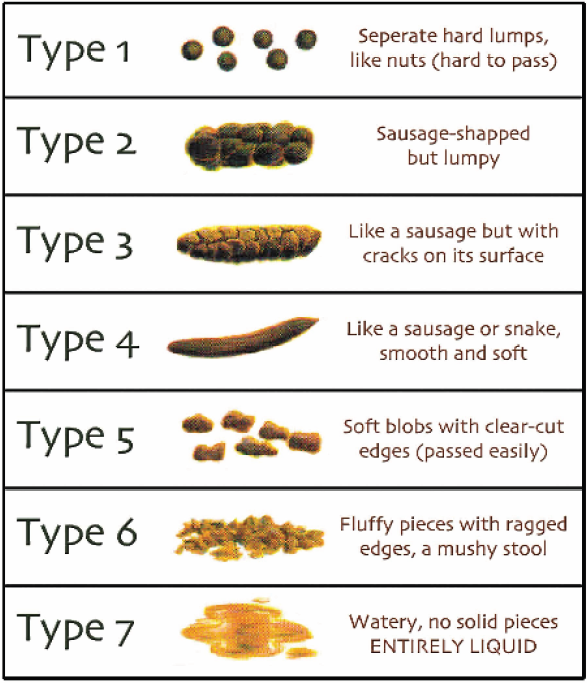
Men get colon cancer 1.5-2 times less often than women, but rectal cancer, on the contrary, 1.5 times more often. The incidence of colorectal cancer in the urban population is higher than in the rural population. It is believed that people over 40 years of age are at greater risk of developing rectal cancer. However, recently in the oncoproctological department of the Russian Cancer Research Center named after. N.N. Blokhin receives many young patients (30-40 years). Scientists believe that, given the large contingent of the population to be examined, it is advisable to limit the circle of people subject to regular preventive medical examinations as much as possible, forming risk groups.
There is a relationship between the incidence of colorectal cancer and nutritional habits in economically developed countries. It has been found that excessive intake of animal fat affects the level of bile acids in the body, which are potential carcinogens and co-carcinogens, i.e. change the activity of certain intestinal microflora, which begins to produce carcinogenic substances. Nutrition containing coarse fiber, antioxidant vitamin complexes, according to some authors, performs a protective function in relation to the occurrence of CRC and can be used to prevent it.
Nutrition containing coarse fiber, antioxidant vitamin complexes, according to some authors, performs a protective function in relation to the occurrence of CRC and can be used to prevent it.
Despite the improvement of methods for examining patients with the use of X-ray diagnostic and endoscopic techniques, the expansion of the network of well-equipped diagnostic centers, so far it has not been possible to significantly improve the situation with early detection of CRC: patients are admitted for treatment to hospitals mainly with III-IV stages of the disease.
Analyzing the materials of the Moscow cancer registry, we were convinced that over 50% of patients with colon cancer in Moscow end up in general surgical hospitals due to the occurrence of severe complications of the underlying disease: acute colonic obstruction, perforation of the tumor and peritonitis, where they receive emergency surgical care for life indications and not always in the required volume, and also remain without specific antitumor treatment.
A similar picture is observed in CRC. In most cases, its late diagnosis is due to the fact that for a long time CRC does not manifest itself in any way, moreover, after 50 years, as a rule, there is a bunch of chronic diseases, against this background, many do not notice the disease. Unfortunately, there are no symptoms specific to CRC.
The following main risk factors and symptoms are currently known and may serve as a guide for early diagnosis:
1) age after 50-55 years,
2) family history of cancer,
3) flatulence, unstable stool (constipation alternating with diarrhea), stool character (“sheep”, “ribbon”),
4) admixture of blood and mucus in the feces,
5) pain of an indeterminate nature and localization in the abdomen,
6) weakness, increased fatigue,
7) feeling of incomplete emptying of the intestine during defecation, etc.
Many years ago, Duquesne proposed a scheme of the symptom complex of colon cancer in the form of a “syndrome of the right” and a “syndrome of the left” half.
When the tumor is located in the right ascending colon, in addition to general discomfort, the leading symptom is a decrease in the level of hemoglobin in the blood due to constant edema from the tumor (at the same time, patients note a crimson color of feces). Patients themselves often do not attach importance to such symptoms as fatigue, weakness, frequent dizziness, loss of appetite, explaining them by general fatigue, nervous and physical overload, etc., and only when relatives pay attention to the grayish tint of the patient’s skin, he first comes to the doctor.
A formal examination in a polyclinic often does not reveal the true cause of the disease. The patient, as a rule, is diagnosed with chronic gastritis, and doctors attribute the decrease in hemoglobin levels to iron deficiency anemia. Appropriate treatment is started, which brings relief for a while, but the disease continues to develop and progress.
When the tumor is located in the colon on the right, under the liver, patients often notice dull aching pain and heaviness in the right hypochondrium, which is very typical for chronic calculous or non-calculous cholecystitis.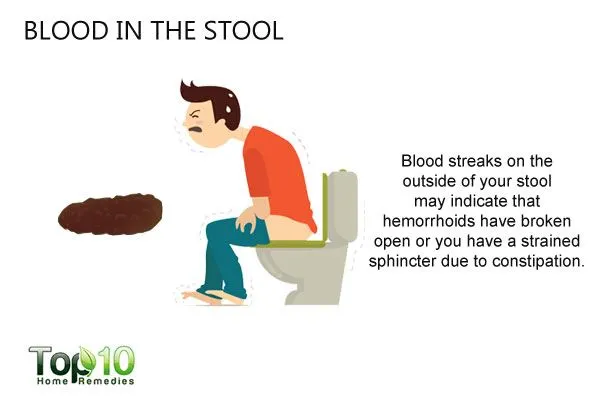 It does not occur to the patient or the doctors to examine the large intestine.
It does not occur to the patient or the doctors to examine the large intestine.
When the tumor is located in the transverse part of the colon and left hypochondrium (ie, in the projection of the stomach, pancreas, spleen), pain is often mistaken for manifestations of gastritis, pancreatitis. And again, the colon remains in the shadows.
Tumors of the left colon (descending colon and sigmoid colon) are characterized by constipation. Many people suffer from constipation for many years and get used to this disease, so they do not immediately pay attention to the increase in their duration (over 3 days). Knowing that they have chronic colitis, patients resort to self-medication, various diets, etc., but they turn to the doctor with a significant delay, often already end up in the surgical department of a hospital with symptoms of acute intestinal obstruction caused by a tumor.
Clinical symptoms of CRC
A tumor of the rectum has its own symptoms, and the degree of its manifestation is determined by the size, degree of invasion, form of growth and localization of the tumor, as well as concomitant complications and the nature of metastasis. As the tumor grows and metastasizes, the symptoms of the disease become more diverse, and their severity increases. Despite the great diversity, there are no pathognomonic and CRC-specific symptoms.
As the tumor grows and metastasizes, the symptoms of the disease become more diverse, and their severity increases. Despite the great diversity, there are no pathognomonic and CRC-specific symptoms.
Primary symptoms
Blood in the stool initially appears as streaks. As the tumor grows and traumatizes, the amount of blood released may increase. In this case, the blood is dark or black (altered), almost always mixed with feces or precedes feces. In the later stages of the disease, it may acquire a fetid odor or be released in the form of blood clots.
Mucus in rectal cancer in its pure form is very rare. More characteristic is the discharge of mucus with streaks of blood, more often with sanious discharge or (at later stages) with an admixture of purulent-bloody fluid or pus with a fetid odor.
As the tumor grows, local symptoms become more pronounced: bleeding from the rectum increases, clots often appear, but, as a rule, there is no profuse bleeding. The form of bowel movements may change – ribbon-like feces, there is a feeling of a foreign body in the rectum.
The form of bowel movements may change – ribbon-like feces, there is a feeling of a foreign body in the rectum.
Secondary symptoms appear when the tumor reaches a significant size, pathogenetically due to narrowing of the rectal lumen and rigidity of the walls, in rare cases they are the first and only symptoms of the disease. In case of cancer localized in the intraperitoneal (rectosigmoid) part of the rectum, symptoms of obstructive intestinal obstruction of varying severity, up to complete, predominate. First of all, this is a violation of the passage of feces through the intestines: constipation, bloating, rumbling, increased peristalsis, in advanced cases accompanied by spastic abdominal pain. Often persistent constipation is replaced by periodic diarrhea. The mechanism of this phenomenon is due to the fact that dense fecal masses do not pass through the narrowed lumen of the rectum, which in turn leads to a decrease in water absorption, an increase in secretory activity and an increase in colon peristalsis.:max_bytes(150000):strip_icc()/1942943-what-causes-orange-stool-01-5b2fe57deb97de0036f361e7.png) With such false diarrhea, the solid part of the feces does not pass through the tumor canal and gradually accumulates in the large intestine above the tumor. Without treatment, obstructive intestinal obstruction, perforation of the intestine above the tumor from overdistension and, as a result, fecal peritonitis can develop.
With such false diarrhea, the solid part of the feces does not pass through the tumor canal and gradually accumulates in the large intestine above the tumor. Without treatment, obstructive intestinal obstruction, perforation of the intestine above the tumor from overdistension and, as a result, fecal peritonitis can develop.
In cancer of the rectal ampulla, complete intestinal obstruction is extremely rare due to the width of the lumen. This localization, along with symptoms of partial colonic obstruction, is characterized by a feeling of incomplete emptying of the rectum after defecation, due to the presence of a large tumor in the intestine.
With a significant narrowing of the lower ampullar portion of the rectum by a tumor, a number of patients experience frequent (up to 15-20 times a day) painful urge to defecate – tenesmus, while nothing is excreted from the rectum, or only liquid feces with pathological impurities, and then in small quantities. This tumor, like a foreign body, stimulates feces in the rectum, and the defecation reflex is triggered, however, solid feces do not pass through the narrowed area of the intestine and, despite stools up to 20 times a day, the patient has symptoms of incomplete obstruction.
When a tumor invades the intestinal wall and grows into neighboring structures and organs, along with the above symptoms, others appear. A tumor located in the lower rectum may spread to the anus, the retrorectal space, the prostate in men, and the vagina in women. In these cases, patients may experience pain in the anus, coccyx, sacrum, and even in the lumbar region. Men may have difficulty urinating.
In case of cancer of the upper ampulla and rectosigmoid rectum in men, the tumor may grow into the wall of the bladder. Clinical manifestations in this case occur only when a rectovesical fistula is formed. These patients have fever due to the development of an ascending urinary tract infection. When urinating through the urethra, gases are released, sometimes feces. The reverse picture may be noted: the excretion of urine through the rectum, sometimes both are present. In women, when germinating into the uterus, clinical manifestations do not occur. With the germination of the posterior wall of the vagina, a rectovaginal fistula can form, while feces and gases are released from the vagina.
General symptoms – a violation of the general condition of patients: weight loss, weakness, decreased ability to work, fatigue, anemia, earthy complexion, decreased turgor and dry skin – occur only with a widespread tumor process, but in the initial stages the condition practically does not change.
Diagnostic methods
Unfortunately, in a number of cases, the doctors to whom the patient addresses about bleeding during defecation are limited to stating this fact, they diagnose “bleeding hemorrhoids” and prescribe the appropriate treatment.
Finger examination allows timely diagnosis of most rectal tumors. According to our data, the erroneous diagnosis of “hemorrhoids” in CRC was made by polyclinic surgeons in 90% of cases.
Nevertheless, it should be noted that the oncological alertness of doctors in polyclinics and diagnostic centers has increased significantly over the past 30 years. Previously, in the 70s, the proportion of medical errors was 10. 8% (now – 1.7%), the duration of the examination from the moment of the initial visit to the doctor was reduced by 8 times.
8% (now – 1.7%), the duration of the examination from the moment of the initial visit to the doctor was reduced by 8 times.
Compared with 2001, the increase in the absolute number of newly diagnosed patients in men and women was 1.9% and 8.6%, respectively.
In the structure of the incidence of the male population of Russia, the first places are occupied by:
- lung cancer (21.9%)
- stomach cancer (10.8%)
- non-melanoma skin neoplasms (9.7%)
- prostate cancer (8.2%).
In the structure of the incidence of the female population:
- breast cancer (19.8%)
- non-melanoma neoplasms
- leathers (13.3%)
- stomach cancer (7.5%)
- colon (7%).
M.I. Davydov, E.M. Axel “The incidence of malignant neoplasms in the population of Russia and CIS countries in 2006.”
Bulletin of the Russian Cancer Research Center im. N.N. Blokhin RAMS, vol. 19, No. 2 (Appendix 1), 2008
The most informative study for the diagnosis of CRC is total colonoscopy. However, not everyone agrees to undergo this procedure. There are certain indications for colonoscopy: anemia of unknown origin, fever, unexplained weight loss, local symptoms of intestinal damage: the release of blood or mucus during bowel movements, pain in the projection of the colon, in the perineum, constipation or diarrhea.
However, not everyone agrees to undergo this procedure. There are certain indications for colonoscopy: anemia of unknown origin, fever, unexplained weight loss, local symptoms of intestinal damage: the release of blood or mucus during bowel movements, pain in the projection of the colon, in the perineum, constipation or diarrhea.
There can be many indications, but there is a group of patients who participate in screening for precancerous conditions and CRC. By this they mean: hereditary risk factors in several parameters – the presence of a family history of first-line colon cancer in relatives, the presence of hereditary syndromes manifested by non-polyposis CRC, familial adenomatous polyposis. These patients are subject to screening colonoscopy much earlier than people in the general population. According to statistics, with familial adenomatous polyposis, most patients develop CRC by the age of 30. Naturally, in this case, observations begin in childhood, and by the age of 20, according to Western standards, patients are shown a colectomy. Numerous clinical studies have shown that in the general population, which does not have hereditary risk factors, patients at the age of 50 should already have a colonoscopy.
Numerous clinical studies have shown that in the general population, which does not have hereditary risk factors, patients at the age of 50 should already have a colonoscopy.
The development of colorectal cancer is a multi-step and multi-stage process, which, according to the calculations of the world’s leading experts who study genetics, biology, risk factors for this process, takes an average of 10 years. It is from this figure that specialists start, recommending the interval between screening colonoscopies.
Yu.A. BARSUKOV, Head of the Department of Oncoproctology, Doctor of Medical Sciences, Professor, Z.Z. MAMEDLI, V.M. KULUSHEV, employees of the Department of Oncoproctology
Russian Cancer Research Center named after N.N. N.N. Blokhin, department of oncoproctology
Is it necessary to drink enzymes if it seems that the food is not digested well
The AST publishing house published a book by gastroenterologist Sergey Vyalov “Gastric Wars”.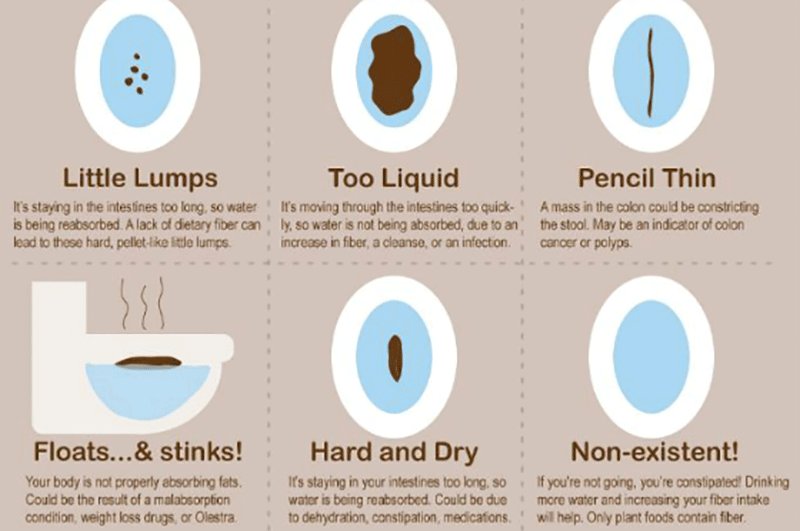 It is written for ordinary people, either suffering from diseases of the gastrointestinal tract, or wishing to avoid them in the future, or striving to help loved ones. We publish an excerpt from the fifth chapter, which will help you learn more about enzymes.
It is written for ordinary people, either suffering from diseases of the gastrointestinal tract, or wishing to avoid them in the future, or striving to help loved ones. We publish an excerpt from the fifth chapter, which will help you learn more about enzymes.
What are enzymes and why are they needed?
Enzymes are substances that speed up chemical reactions. Thousands of biochemical reactions take place in the human body: not only in the stomach and intestines, but also in the brain, in the blood, inside the cells. Therefore, there are thousands of enzymes in the body. But we will only talk about those few of them that are needed for the digestion of food. There are four types of enzymes in total, depending on what they break down.
1. Proteases. They break down proteins. Protein molecules are very large and cannot be absorbed through the intestinal wall. They need to be broken down into parts before they can be assimilated. Imagine a squirrel is a big house. You cannot transport it to another place – no truck can transport the whole house. But it can be disassembled into bricks. That’s what enzymes do! They break down a protein molecule into amino acids – small molecules, the “bricks” of proteins.
You cannot transport it to another place – no truck can transport the whole house. But it can be disassembled into bricks. That’s what enzymes do! They break down a protein molecule into amino acids – small molecules, the “bricks” of proteins.
These “bricks” are absorbed through the intestinal wall and enter the bloodstream. They penetrate the liver, where a new protein is created from them – the building material for almost everything that is in our body. Including from these “bricks” the enzymes themselves are formed, which are necessary for the digestion of food.
There are a lot of types of proteins that enter our stomach, so there are different enzymes that digest proteins of different types. In addition, different enzymes are responsible for different steps in the breakdown of molecules. Those that are produced in the stomach simply tear the “house” apart. Then other enzymes are connected – they dismantle the “pieces” that have fallen off the house into separate “bricks”. But the body can dismantle this house even with the help of the pancreas alone, so the contribution of stomach enzymes to this process is rather cosmetic.
But the body can dismantle this house even with the help of the pancreas alone, so the contribution of stomach enzymes to this process is rather cosmetic.
2. Lipases. This group of enzymes digests fats, which have relatively small molecules. They are broken down into fatty acids and glycerol. Fatty acids are then absorbed in the intestines and used for various purposes: mostly as a fuel, to a lesser extent as a building material.
3. Amylases (or carbohydrases). These are carbohydrate digesting enzymes. Most of them are represented by starch. We get it from vegetables, cereals, bread, pasta and any other carbohydrate food. Starch makes up 50% of our daily diet. A starch molecule is a very long chain that is made up of glucose molecules. Like other nutrients, starch cannot be absorbed naturally. Enzymes “cut” this molecule into small pieces. Glucose is formed from starch, which is absorbed through the intestinal wall. It is mainly used as a source of energy. Excess glucose is deposited on the sides in the form of fat – these are the body’s reserves for a rainy day.
Excess glucose is deposited on the sides in the form of fat – these are the body’s reserves for a rainy day.
4. Nucleases. Cleave nucleic acids – DNA and RNA. Digestion of food begins in the mouth. Saliva contains enzymes that break down starch. Therefore, if you chew bread for a very long time, it will become sweet – glucose appears in your mouth. Protein digestion begins in the stomach. In addition, it contains a little lipase, but it does not play a significant role in the digestion of fats – there is very little of this enzyme here.
Then the food bolus moves down into the duodenum. This is where the main digestive processes take place. Digestive juices from the liver and pancreas flow into the initial section of the small intestine. Bile enters from the liver. It performs three important functions: it activates pancreatic enzymes, emulsifies fats and facilitates their further digestion, and also stimulates intestinal motility.
The pancreas is directly responsible for the digestion of food. It is she who abundantly waters the food with juice containing a huge amount of any enzymes: splitting proteins, fats, carbohydrates and nucleotides.
It is she who abundantly waters the food with juice containing a huge amount of any enzymes: splitting proteins, fats, carbohydrates and nucleotides.
The wall of the small intestine also produces a small amount of enzymes. She can digest proteins and fats. Of the carbohydrates, only disaccharides can be broken down, that is, carbohydrates consisting of two molecules of simple sugars.
The small intestine cannot digest starch on its own. And there are not so many enzymes for the breakdown of fats and proteins in it. The main role in this process still belongs to the pancreas. That is why diseases of this organ critically affect the digestive function. There are no enzymes in the large intestine. But there are beneficial microbes. E. coli and lactobacilli help us digest milk sugar – lactose.
What does “food is not digested” mean and what does it look like?
Not digested means not completely broken down. And if it does not split, then it cannot be absorbed into the blood through the intestinal wall. Such products pass through the intestines in transit and merge into the toilet. In addition, under the influence of the bacterial flora, they rot and ferment, causing unpleasant symptoms. We will consider only those causes of poor digestion that are associated with the pancreas.
Such products pass through the intestines in transit and merge into the toilet. In addition, under the influence of the bacterial flora, they rot and ferment, causing unpleasant symptoms. We will consider only those causes of poor digestion that are associated with the pancreas.
The most obvious reason is that the pancreas produces few enzymes because it is destroyed. But in fact, there are many other reasons.
- The pancreas can produce enzymes, but they cannot be activated and are not stimulated by food.
- Enzymes are produced at the wrong time: when there is no food in the intestines.
- Enzymes are produced in sufficient quantities and on time, but they cannot enter the intestines because the pancreatic ducts are blocked.
- Enzymes are produced, but they are immediately destroyed, so they simply do not have time to digest food.
If this is the case, then the non-working enzymes do not digest the food, and we can suspect it from the symptoms. With a complete violation of digestion, terrible diarrhea occurs. But this does not always happen, and with a partial violation of digestion, other symptoms occur.
With a complete violation of digestion, terrible diarrhea occurs. But this does not always happen, and with a partial violation of digestion, other symptoms occur.
Steatorrhea – fatty feces. This is the most common sign that the pancreas is not doing its job. Feces become semi-liquid, greasy, poorly washed off the walls of the toilet. In the later stages, the feces are offensive, frothy, and float on the surface of the water. Steatorrhea can result from two causes. The first is called maldigestion – this means that fats do not break down into parts. The second – malabsorption – means that fats are not absorbed in the intestines.
After acute pancreatitis, steatorrhea develops relatively infrequently. The risk is higher if the inflammation of the pancreas occurred while drinking alcohol. You can notice this if the next morning after the evening drinking of alcohol there is a loosening of the stool. But in most people, the function of digesting fats is completely restored even after acute pancreatitis.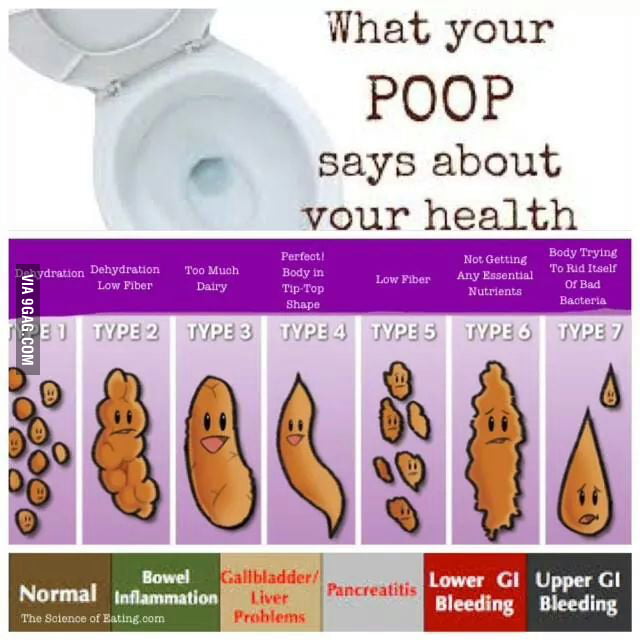 The rest of the pancreas works in two shifts or one and a half rates, and steatorrhea disappears after six months in 60% of people, after a year in 80% and after two years in 90% of people with pancreatitis. With biliary pancreatitis, which was initially provoked by bile (and it accounts for a third of all cases), in almost 100% of cases, steatorrhea disappears after a year.
The rest of the pancreas works in two shifts or one and a half rates, and steatorrhea disappears after six months in 60% of people, after a year in 80% and after two years in 90% of people with pancreatitis. With biliary pancreatitis, which was initially provoked by bile (and it accounts for a third of all cases), in almost 100% of cases, steatorrhea disappears after a year.
The situation is much worse if acute pancreatitis was severe. Then steatorrhea persists for a long time, sometimes forever. Even after seven years, fat in the stool is still found in two out of three people. Usually, if after four years the function of the pancreas has not recovered, then it is lost forever. Previously working tissues are simply replaced by scars that support the skeleton of the organ, but cannot produce enzymes. More often steatorrhea is a consequence of chronic pancreatitis. Fat in the feces appears on average five years after the onset of this disease.
Creatorrhea is a severe manifestation of pancreatic insufficiency. Appears only in the advanced stage of pancreatitis. Undigested muscle fibers appear in the feces. This suggests that the protein digestion function is impaired. It is difficult to see them with the naked eye, so they are found only when analyzing feces in the laboratory. But smelling the sharp fetid smell of feces is quite real.
Appears only in the advanced stage of pancreatitis. Undigested muscle fibers appear in the feces. This suggests that the protein digestion function is impaired. It is difficult to see them with the naked eye, so they are found only when analyzing feces in the laboratory. But smelling the sharp fetid smell of feces is quite real.
Malnutrition is the most dangerous syndrome that develops with impaired digestion. In the natural course of the disease, if not intervened and not treated, it leads to death. A person’s body weight decreases, a deficiency of fat-soluble vitamins develops, osteoporosis and bone destruction progresses. […]
Is it possible to check the amount of enzymes?
Yes. In acute pancreatitis, a blood test is done to check whether the pancreas is so destroyed that the enzymes have already entered the bloodstream. In chronic pancreatitis – fecal analysis to find out how many enzymes iron can secrete and what else it is capable of, whether they are enough or not.
Previously popular, but still used in our country in medieval institutions, duodenal sounding is no longer used to diagnose pancreatitis. This method is deprecated. It is unpleasant, unsafe, and by and large unnecessary, since it did not provide almost any information before. It was used rather in scientific research to study the functioning of the pancreas in the norm, but the method is unknown for what migrated into practice. The essence of this study is that a probe is inserted into the small intestine to collect digestive juices, the production of which is stimulated by drugs. So it is possible to reveal that there are not enough pancreatic enzymes, but it is impossible to determine the cause of their shortage. It is also possible to stimulate the pancreas up to acute pancreatitis, either to bring an infection into it directly from your own intestines, or to add more bile to the pancreas. All this can end with acute pancreatitis and resuscitation.
Therefore, the main tests to check the pancreas are the detection of fat in the feces and the determination of pancreatic elastase-1 activity.
This is the main study to evaluate organ function.
Elastase is more stable than other pancreatic enzymes. It is defined in different ways. The best option is ELISA (enzymatic immunoassay). With this method of testing, animal elastase, which is contained in preparations with enzymes, is not determined, but only its own, secreted by our pancreas, is detected.
A stool enzyme test is effective even for mild enzyme deficiencies: it detects the disease in two out of three people with pancreatitis. With moderate and severe insufficiency, the accuracy of the method reaches 100%. You can set not only the presence, but also the stage of the problem. Most people have an elastase-1 content of more than 500 mcg / g. The pancreas is more or less doing its job at 200+ mcg/g. This is the last value that is considered normal. Enzymes should be added at elastase-1 levels less than 200 µg/g. If the amount of the enzyme is less than 100 µg/g, then a severe enzyme deficiency is determined. This is an indication for the use of high dose enzyme tablets.
This is an indication for the use of high dose enzyme tablets.
Do I need to drink enzymes if I have enough of my own?
You can drink enzymes just like that, but you don’t need to. The good news is that it’s safe or not very dangerous. The bad news: it hurts your wallet and does no good. Various studies have been conducted to find out whether taking enzymes in tablets reduces the production of their own or not. The conclusion is this: the pancreas works on the principle of feedback, which means that if there are a lot of enzymes in the intestines, then it will simply stop producing them. A single dose of extra enzymes will not affect this, but it will remain useless nonetheless. However, if you drink enzymes often or use high dosages, then the function of the gland will slow down.
Want to know if you need enzymes? It makes no sense to listen to the symptoms and look at the poop in the toilet. Just go to the doctor or the nearest laboratory and donate feces for pancreatic elastase-1. If the level is above 200 mcg / g, then no enzymes are needed. But if at the same time there are alarming symptoms, then it’s time to finish attributing everything to the pancreas and start looking for the real reason for their appearance. It is possible that this will be the stomach or intestines.
If the level is above 200 mcg / g, then no enzymes are needed. But if at the same time there are alarming symptoms, then it’s time to finish attributing everything to the pancreas and start looking for the real reason for their appearance. It is possible that this will be the stomach or intestines.
If there are few enzymes, what will be the consequences for the organism?
It is bad if there are not enough enzymes. In this case, fat will appear in the feces. Chronic diarrhea occurs and polyfecal matter is a condition in which the amount of feces increases significantly. The reason is that the food is not digested. Instead of being broken down and absorbed into the bloodstream, it passes through the intestines and drains into the sewer. Along the way, it feeds the intestinal microflora, which releases a lot of gases into the feces, and it becomes loose. Therefore, visually it seems that there are more poop.
If food is not digested, then the body lacks nutrients. The person is losing weight. Deficiency of protein, vitamins, minerals, lipoproteins develops. This is a dangerous condition that can lead to a hospital if ignored. But if the problem is identified in time, then the treatment is simple: take enzymes with food in a selected dose.
The person is losing weight. Deficiency of protein, vitamins, minerals, lipoproteins develops. This is a dangerous condition that can lead to a hospital if ignored. But if the problem is identified in time, then the treatment is simple: take enzymes with food in a selected dose.
The feedback principle for enzyme production
The pancreas constantly secretes small amounts of enzymes, even if you don’t eat anything. Let me remind you that bile is not released without food, and therefore enzymes do not work, even if they are released and enter the intestines. But in those people whose gallbladder is removed, bile is constantly secreted, and it turns out that the enzymes are activated in the intestines in the absence of food. And over time, this can create a new problem in the intestines.
The level of enzyme production is regulated by several mechanisms: primarily nerves and hormones. How do nerves work? I saw food, got hungry – juices began to stand out. Nerves can also reduce the production of enzymes: pain, sleep, strenuous physical and mental work block the release of digestive juices. How is hormonal regulation carried out? The hormones of the stomach, intestines and bile enhance the production of pancreatic juice: secretin, gastrin, cholecystokinin, serotonin, insulin, bombesin, bile acids. There are also a half dozen hormones that weaken the production of enzymes.
How is hormonal regulation carried out? The hormones of the stomach, intestines and bile enhance the production of pancreatic juice: secretin, gastrin, cholecystokinin, serotonin, insulin, bombesin, bile acids. There are also a half dozen hormones that weaken the production of enzymes.
The activity of the pancreas increases when we eat and decreases after the food has been digested. This body is able to distinguish what we have eaten, and produces more of certain enzymes.
There is also a mechanism of adaptation of the pancreas. If we constantly eat carbohydrates, but do not eat fats and protein, then the body will learn to produce more enzymes to digest starch, but will reduce the secretion of lipases and proteases. This adaptation occurs within two to three weeks. The delay occurs due to the fact that the pancreas prepares a supply of enzymes in advance for some time, based on your menu in the past. This is the main reason why you should not abuse enzyme preparations in the absence of a proven enzyme deficiency. Your own pancreas can become lazy, and then you will have to sit on enzymes all the time.
Your own pancreas can become lazy, and then you will have to sit on enzymes all the time.
How do tablet enzymes actually work?
Tablet enzymes are used as replacement therapy, meaning they replace what you are missing. Therefore, there is no point in taking enzymes if your pancreas is working properly. If it works poorly, this must be proved by passing tests. At least it is necessary to hand over a feces on enzymes. Only when a diagnosis is established should treatment begin.
Remember that enzymes are not drugs that can be “cured”. Replacement therapy is prescribed for a long time, and if the pancreas has already turned into scars and is torn into flaps, then even for life. If much of the pancreatic tissue is destroyed, it will never regenerate.
All enzyme preparations are different. What is the difference?
Various enzyme preparations. All of them contain lipase, protease and amylase – enzymes for the digestion of fats, proteins and carbohydrates. The same enzymes as in our pancreas, but the difference is that they are derived from animals. In addition, there are differences between tablets from different manufacturers.
The same enzymes as in our pancreas, but the difference is that they are derived from animals. In addition, there are differences between tablets from different manufacturers.
- Dose. The package indicates only the amount of lipase – for example, 10 thousand units. But in the instructions you can also see the amount of other enzymes that you should not forget about. Some pills contain only a symbolic and almost useless amount of enzymes, so you should not expect at least some result at all.
- Bile acids. May or may not be included in the formulation. Most people do not need bile acids. Sometimes, on the contrary, bile acids are completely superfluous and can provoke a malfunction of the gallbladder.
- Microsphere tablets or capsules. Microspheres are better mixed with food, better out of the stomach, more effective, but more expensive.
- The presence of an enteric coating. Most “normal” drugs have it – this is a prerequisite. Oddly enough, some drugs do not contain such a shell.
 Their effectiveness is questionable, equal to zero or the same as that of a placebo pacifier: pancreatic enzymes are simply destroyed in the stomach by hydrochloric acid.
Their effectiveness is questionable, equal to zero or the same as that of a placebo pacifier: pancreatic enzymes are simply destroyed in the stomach by hydrochloric acid.
When we say enzymes, we usually mean pancreatin. But there are other enzymes as well. For example, papin is a proteolytic enzyme from plants. Some people take enzymes to digest milk sugar – they contain lactase.
Why take lactase enzyme?
Adults often develop and progressively become deficient with age in lactase, the enzyme that digests milk sugar. Nature provides that a person eats milk only in the first few years of life. Then the splitting of milk is not required. But nature did not foresee that we will tame goats, cows and camels, we will take their milk and use it throughout our lives.
Lactase deficiency is a conditional norm for an adult, but a disease for a child. Babies must digest milk, otherwise they risk starving to death. However, in the modern world, infants are no longer threatened with starvation.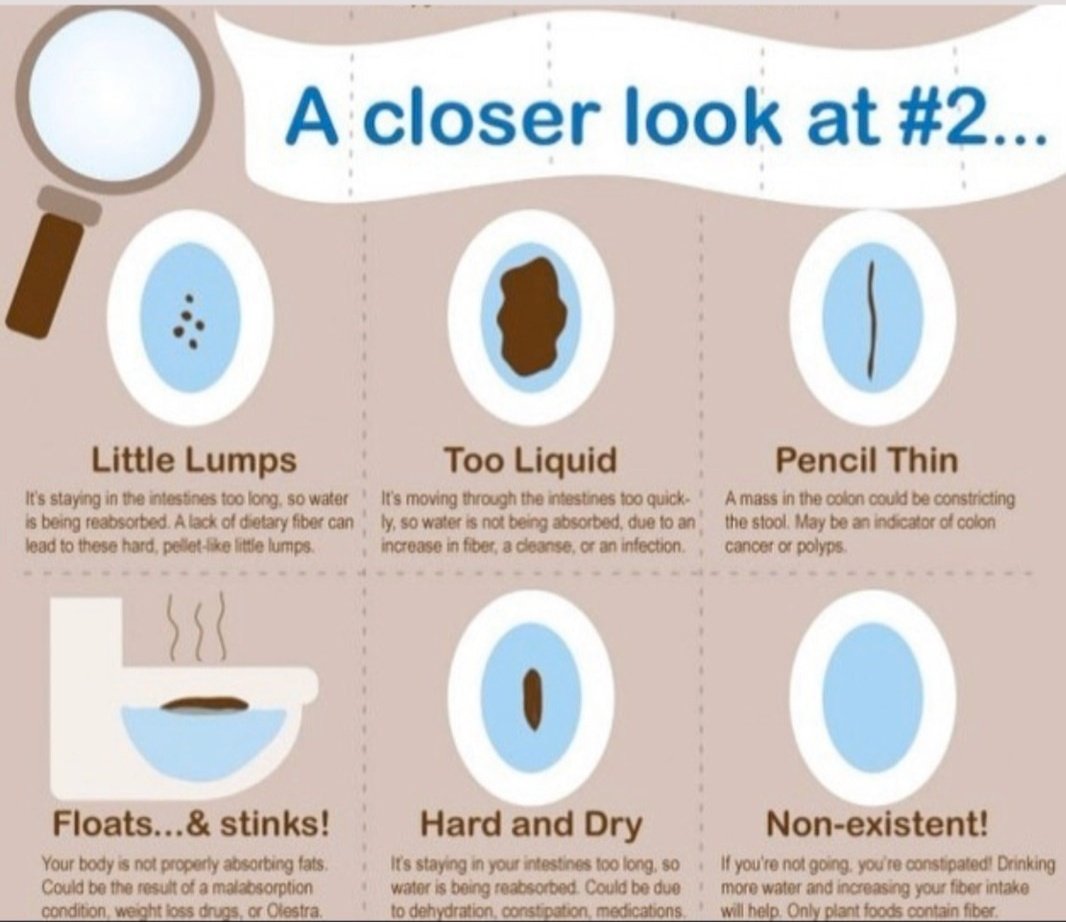 There are preparations containing the enzyme lactase. Taking them regularly will help anyone from zero to 150 years old to digest milk.
There are preparations containing the enzyme lactase. Taking them regularly will help anyone from zero to 150 years old to digest milk.
Attention! Do not confuse carbohydrate and enzyme: the difference in their name is just one letter. The carbohydrate is called lactose, and the enzyme that breaks it down is called lactase.
And a little more attention! Do not confuse lactose intolerance with cow’s milk protein allergy. The difference is manifested in a different reaction to milk from different animals: cow and goat.
And most importantly, attention! The manifestations of lactose intolerance, lactase deficiency, and cow’s milk protein allergy can be about the same, and the same as with other bowel problems. It can have one or several problems at once, and sometimes it happens that a person collects all the problems at once. Therefore, before “writing off” all your symptoms for milk, you need to carefully check the intestines and make sure that there are no other problems. […]
[…]
How does the intestine mask its problems as enzyme deficiency?
It is impossible to tell by your symptoms whether you have pancreatic insufficiency or one of the 120 bowel diseases known to science. The symptoms and manifestations of these problems are almost the same: pain and cramps in the abdomen, flatulence and gas, diarrhea and shapeless stools.
Even the appearance of fat in the stool is an unreliable symptom. It can appear not only from the pancreas, but also from a violation of the secretion of bile from the liver, or from the intestines, or from atrophy of the stomach. In liver diseases, there is not enough bile acids, so fat is not broken down even with good pancreas function. In diseases of the intestine, fat is broken down, but not absorbed – a large amount of fatty acids appears in the feces.
The conclusion is as follows: if you feel that your stomach is growling, do not rush to pounce on enzymes. Donate feces for elastase to check whether the pancreas is really to blame for your troubles.
How many enzymes do you need for a standard meal?
A healthy person does not need to take enzymes. Moreover, in the preparations that are advertised on TV, they are often contained in scanty quantities, so they do not significantly affect digestion. For example, the most popular drug from advertising contains only 3.5 thousand units of lipase. For comparison: for one meal, a person suffering from chronic pancreatitis is prescribed at least 40 thousand units. This is the starting dose. In the future, it can be increased.
Most advertised drugs come in tablets. This is an inefficient form because most of the enzyme does not come into contact with food. Doctors prescribe only microspheres, and their size is important. Microspheres with a diameter of 1.2 mm perform 25% better than microspheres with a diameter of 2 mm.
Finally, the final nail in the coffin of low-dose over-the-counter enzymes is that many of them are not even enteric-coated. They enter the stomach and are destroyed there. Is it bad or good? It’s just money for pills flowing from your pocket into the pocket of archaic pill makers. If you are already spending finances on your health, then take the best, thus investing in the progress of medical science, and do not vote with your ruble for medicine of the century before last. In any case, the dosages are meager: they would not improve digestion, even if they penetrated the intestines. In addition, most of these drugs are taken without real need, to calm the conscience in the self-treatment of temporary disorders or diseases that are not treated with enzymes at all.
Is it bad or good? It’s just money for pills flowing from your pocket into the pocket of archaic pill makers. If you are already spending finances on your health, then take the best, thus investing in the progress of medical science, and do not vote with your ruble for medicine of the century before last. In any case, the dosages are meager: they would not improve digestion, even if they penetrated the intestines. In addition, most of these drugs are taken without real need, to calm the conscience in the self-treatment of temporary disorders or diseases that are not treated with enzymes at all.
Now the answer to the main question: how much enzyme should I take. If you don’t get sick, not at all! If there is chronic pancreatitis, then good digestion will require 50 thousand IU for a full meal and 20-25 IU for a snack.
What if it doesn’t work? Change tablets to capsules with microspheres. And at the same time think: perhaps you are treating the wrong disease and the pancreas is actually in full order.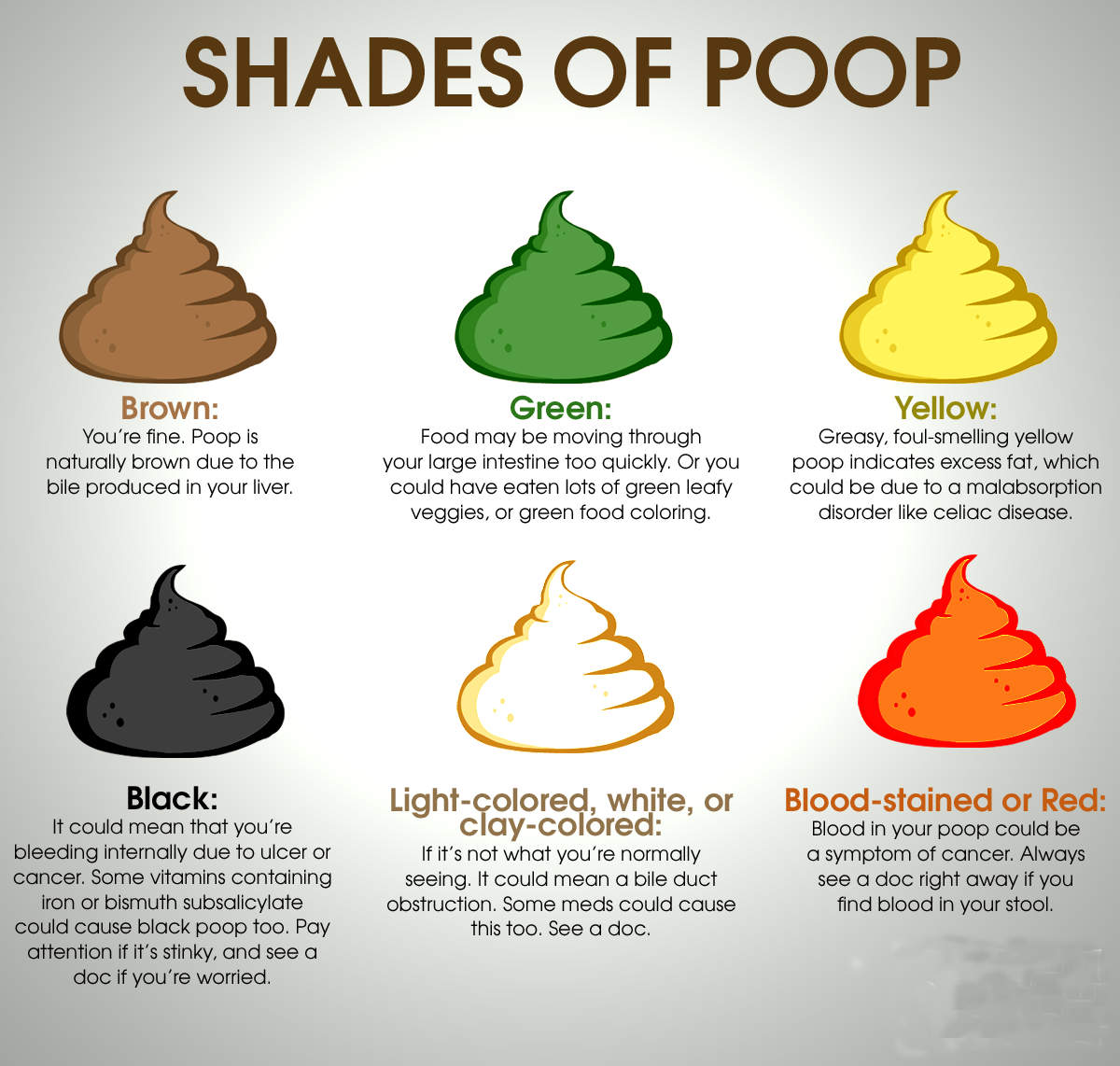
What to do if digestion is still disturbed? In this case, doctors prescribe proton pump inhibitors. They block the production of hydrochloric acid. The pH level of the contents of the stomach and intestines shifts to the alkaline side, and in such conditions, enzymes work better. But this is another reason to think that, perhaps, the symptoms are not associated with the pancreas at all, but with another organ.
What to do if there is still no sufficient effect? Increase the dosage of pancreatin for one dose. Most patients take no more than 80 thousand IU per appointment. The maximum dose allowed by the instructions for the use of drugs is 10 thousand units per 1 kg of the patient’s body weight per day. How much is this? Let’s say you weigh 80 kg and eat four times a day. In this case, the maximum dose per meal is 200 thousand units. Rarely reach such high dosages. But this is possible if a person’s pancreas is completely destroyed or surgically removed.
This is the third call to check other organs of the digestive system, because the very fact of such a low amount of own enzymes for a long time will lead to new problems.

 But if your liver doesn’t send enough of this fluid through your bile ducts into the small intestine, it can cause fatty stool that floats. Gallstones can also block bile ducts, leading to fatty stools.
But if your liver doesn’t send enough of this fluid through your bile ducts into the small intestine, it can cause fatty stool that floats. Gallstones can also block bile ducts, leading to fatty stools. This is the main study to evaluate organ function.
This is the main study to evaluate organ function. Their effectiveness is questionable, equal to zero or the same as that of a placebo pacifier: pancreatic enzymes are simply destroyed in the stomach by hydrochloric acid.
Their effectiveness is questionable, equal to zero or the same as that of a placebo pacifier: pancreatic enzymes are simply destroyed in the stomach by hydrochloric acid.